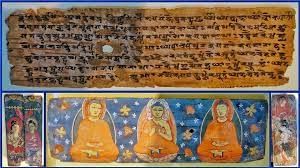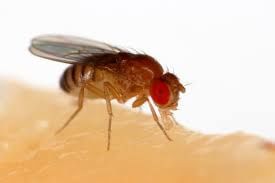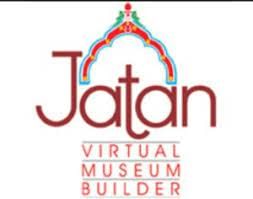UPSC Daily Current Affairs- 12th June 2023 | Current Affairs & Hindu Analysis: Daily, Weekly & Monthly PDF Download
GS-I
Ram Prasad Bismil: A Revolutionary and a Poet
Why in News?
This article revolves around the life, contributions, and legacy of Ram Prasad Bismil, a revolutionary figure in India’s freedom struggle against British colonial rule.
Ram Prasad Bismil
- Birth: Ram Prasad Bismil was born on June 11, 1897, in Shahjahanpur district, UP.
- Revolutionary activities: He actively fought against British Raj and participated in notable events like the Mainpuri Conspiracy of 1918 and the Kakori Train Action of 1925.
- Founding of Hindustan Republican Association: Bismil established the Hindustan Republican Association (HRA, later known as the Hindustan Socialist RA) and played a pivotal role in the organization.
- Sacrifice and execution: Bismil was hanged for his revolutionary activities on December 19, 1927, at the age of 30.
Early life and Arya Samaj connections
- Upbringing and linguistic influences: Bismil was born into a Rajput Tomar family and learned Hindi from his father, Urdu from a nearby maulvi, and also studied in an English medium school in Shahjahanpur.
- Association with Arya Samaj: Bismil joined the Arya Samaj during his childhood, becoming a prolific writer and poet. He used pen names such as ‘Agyat’, ‘Ram’, and the well-known ‘Bismil’.
- Poem “Mera Janm”: At the age of 18, Bismil wrote the poem “Mera Janm” expressing his anger over the death sentence of Arya Samaj missionary Bhai Parmanand.
Major events associated to Bismil
(1) Mainpuri Conspiracy
- Political disillusionment: Bismil became disillusioned with the moderate wing of the Congress Party and rejected negotiation or appeasement with the British.
- Formation of Matrivedi: Bismil established the revolutionary organization Matrivedi and collaborated with Genda Lal Dixit, who had connections with dacoits and sought to utilize them in the armed struggle.
- Mainpuri Ki Pratigya: Bismil’s famous poem, “Mainpuri Ki Pratigya,” was widely distributed in pamphlets across the United Provinces. He carried out acts of looting to gather funds for his organization.
(2) Founding the Hindustan Republican Association
- Return to Shahjahanpur: After being underground for several years, Bismil returned to Shahjahanpur in February 1920.
- Formation of HRA: Bismil, along with Ashfaqullah Khan, Sachindra Nath Bakshi, and Jogesh Chandra Chatterjee, founded the Hindustan Republican Association. Later, Chandra Shekhar Azad and Bhagat Singh joined the organization.
- Release of the manifesto: Bismil played a significant role in penning the manifesto titled “Krantikari,” which was officially released on January 1, 1925. The manifesto called for an organized and armed revolution to establish a federal Republic of United States of India.
(3) Kakori Train Action
- Objective and planning: The Kakori Train Action aimed to rob a train carrying treasury bags between Shahjahanpur and Lucknow.
- Execution of the action: On August 9, 1925, around ten revolutionaries, including Bismil and Ashfaqullah Khan, stopped the train at Kakori station, overpowered the guard, and looted the treasury bags containing approximately Rs 4,600.
- Consequences and crackdown: The action drew both British outrage and mixed responses from the Indian public. The misfiring of a gun resulted in the accidental killing of a passenger, Ahmad Ali, dampening public support. Subsequently, a violent crackdown led to the arrest of most involved, excluding Chandrashekhar Azad.
Death and legacy
- Trial and sentencing: Bismil, along with Ashfaqullah Khan and Rajendranath Lahiri, faced a long trial and were ultimately sentenced to death.
- Execution and martyrdom: On December 19, 1927, Bismil was executed at the age of 30, leaving behind a legacy of sacrifice and dedication to the cause of freedom.
- Enduring influence and remembrance: Bismil’s poetry continues to inspire and his call for Hindu-Muslim unity serves as a symbol of communal harmony. He is remembered for his revolutionary spirit and deep concern for society, justice, and equality.
Source: Indian Express
Gilgit Manuscripts
Why in News?
Recently, the Minister of State for Culture inaugurated an exhibition under the Azadi Ka Amrit Mahotsav (AKAM) titled "Hamari Bhasha, Hamari Virasat” and mentioned about Gilgit Manuscripts to celebrate 75th International Archives Day at National Archives of India, New Delhi.
About Gilgit Manuscripts:
- It was written between the 5" -6" centuries CE, which is the oldest surviving manuscript collection in India.
- It was written on the birch bark folios documents written on pieces of inner layer of the bark of birch trees were found in Kashmir region.
- It contains both canonical and non-canonical Jain and Buddhist works that throw light on the evolution of many religious-philosophical literature.
What are Manuscripts?
- A manuscript is a handwritten composition on paper, bark, cloth, metal, palm leaf or any other material dating back at least seventy-five years that has significant scientific, historical or aesthetic value.
- These are found in hundreds of different languages and scripts. Often, one language is written in a number of different scripts.
- For example, Sanskrit is written in Oriya script, Grantha script, Devanagari script and many other scripts.
- These are distinct from historical records such as epigraphs on rocks, farmans, revenue records which provide direct information on events or processes in history. Manuscripts have knowledge content.
Source: PIB
Diego Garcia Island

Why in News?
Dozens of migrants have been stranded for months on Diego Garcia Island in the Indian Ocean after being rescued from their struggling fishing boat.
About Diego Garcia Island:
- It is a coral atoll, the largest and southernmost member of the Chagos Archipelago, in the central Indian Ocean.
- It is a part of the British Indian Ocean Territory.
- It consists of a V-shaped sand-fringed cay and its lagoon is open at the north end.
- This island was discovered by the Portuguese in the early 16th century.
Key facts about the Chagos Archipelago
- It is part of the British Indian Ocean Territory (BIOT) and Mauritius claims the archipelago as its own.
- In 1810, Mauritius was captured by the United Kingdom and France ceded the territory in the Treaty of Paris.
- In 1965, three years before Mauritius got its independence, Britain separated the Chagos islands to carve out a ‘British Indian Ocean Territory’.
- In 1966, the UK leased Diego Garcia (the biggest island in the Chagos archipelago) to the US to create an air & naval base. For constructing the defence installation, the inhabitants of the island were forcibly removed.
In 1968 Mauritius was granted independence. - In June 2017, the UN General Assembly adopted a resolution calling on the ICJ to deliver an advisory opinion on whether the continued administration of the Chagos Archipelago by the United Kingdom following the 1968 decolonisation process of Mauritius was lawful.
- In February 2019, the International Court of Justice (ICJ) issued an advisory opinion that Britain has an obligation to end its administration of the Chagos Archipelago — home to the U.S. military base of Diego Garcia — and complete the process of decolonisation of Mauritius.
Source: BBC
GS-II
Why do Kosovo-Serbia tensions persist

Why in News?
Kosovo has been urged to hold new elections in the north of the country to de-escalate tensions with Serbia, after an intervention by German Chancellor Olaf Scholz and French President Emmanuel Macron.
About Kosovo-Serbia tensions:
- Kosovo is a mainly ethnic Albanian populated territory that was formerly a province of Serbia. It declared independence in 2008.
- Serbia has refused to recognize Kosovo’s statehood and still considers it part of Serbia, even though it has no formal control there.
- Kosovo’s independence has been recognized by about 100 countries, including the United States.
- Russia, China and five EU countries, most of them with separatist regions of their own, have sided with Serbia.
- The deadlock has kept tensions simmering and prevented full stabilization of the Balkan region after the bloody wars in the 1990s.
- What’s the latest flare-up about?
- After Serbs boycotted last month’s local elections held in northern Kosovo, where Serbs represent a majority, newly elected ethnic Albanian mayors moved into their offices with the help of Kosovo’s riot police.
- Serbs tried to prevent them from taking over the premises, but police fired tear gas to disperse them.
- Serbs staged a protest in front of the municipality buildings, triggering a tense standoff that resulted in fierce clashes between the Serbs and the Kosovo peacekeepers and local police.
- How deep is the ethnic conflict in Kosovo?
- The dispute over Kosovo is centuries old. Serbia cherishes the region as the heart of its statehood and religion.
- Numerous medieval Serb Orthodox Christian monasteries are in Kosovo. Serb nationalists view a 1389 battle against Ottoman Turks there as a symbol of their national struggle.
- Kosovo’s majority ethnic Albanians view Kosovo as their country and accuse Serbia of occupation and repression. Ethnic Albanian rebels launched a rebellion in 1998 to rid the country of Serbian rule.
- Serbia’s brutal response prompted a NATO intervention in 1999, which forced Serbia to pull out and cede control to international peacekeepers.
- What is the situation locally?
- There are constant tensions between the Kosovo government and the Serbs who live mainly in the north of the country and keep close ties with Serbia.
- Attempts by the central government to impose more control in the Serb-dominated north are usually met with resistance from Serbs.
Source: The Hindu
Gauhati HC quashed Nagaland govt’s notification banning dog meat’s sale
Why in News?
The Kohima bench of the Gauhati High Court recently quashed a 2020 government notification, which had banned the trade and sale of dog meat in Nagaland.
About
- In a 2020 government notification, Nagaland had banned dog markets, the commercial import and trading of dogs, as well as the commercial sale of dog meat in markets and in dine-in restaurants.
- This had come after a 2014 circular by the Food Safety and Standard Authority of India (FSSAI) stating that the slaughter of any species other than the ones listed in Food Safety and Standards (Food Products Standards and Food Additives) Regulation, 2011 is not permissible.
- Regulation 2.5.1(a) of the 2011 Regulations defines “animal” as any animal belonging to the species of ovines [sheep family], caprines [goat family], suillines [pig family], bovine [cattle], and including poultry and fish.
- The Nagaland government order had stated that the ban was necessary to “regulate the safety of food articles safe for human consumption”.
HC Observation on Meat Regulation
- The HC observed that dog meat “appears to be an accepted norm and food amongst the Nagas even in modern times.”
- The court noted that the long-standing consumption of dog meat by various tribes in Nagaland has been recorded in multiple texts such as ‘The Angami Nagas, With Some Notes on Neighbouring Tribes’ authored by J.H. Hutton in 1921.
- The court also underlined that the definition of ‘food’ in the FSSA as primarily meaning “any substance, whether processed, partially processed or unprocessed, which is intended for human consumption.” The court noted that this definition is “wide and liberal enough” to include dog meat.
- The court stated, there can be remedial measures to ensure the enforcement of the Prevention of Cruelty to Animals Act and the Indian Penal Code.
Consumption of Dog Meat
- Dog meat is considered a delicacy among certain communities of Nagaland and some other parts of the Northeast — has been traditionally consumed in parts of the state for decades.
- Certain communities in Nagaland also consider dog meat to have medicinal properties.
Source: IE
GS-III
Fruit Flies: Unveiling their Contributions to Science and Medicine
Why in News?
Flies’ negative perception: Fruit flies often considered annoying pests, but their significance in biological and medical science is immense.
- Economic and environmental importance: Flies, including fruit flies, play crucial roles as pollinators for plants and contribute to decomposition processes.
Fruit Flies (Drosophila melanogaster)
- Overview: Fruit or vinegar fly species known for its nuisance during summer.
- Scientific significance: Drosophila melanogaster is a well-understood animal organism globally and has contributed to numerous Nobel Prize-winning discoveries in physiology and medicine.
Partnership between Science and Flies
- Early collaborations with flies: Biologist Thomas Hunt Morgan’s experiments with fruit flies revolutionized evolutionary and genetic research.
- Discoveries in genetics: Fruit flies provided insights into genetic mutations, inheritance patterns, and the mapping of genes on chromosomes.
- Understanding biological processes: Studies in fruit flies helped unravel mechanisms of development, gene regulation, and protein synthesis.
Insights from Drosophila Research
- Embryo studies: Microscopic examination of Drosophila embryos aided in understanding genetic defects and gene networks that control development.
- Contribution to genetic medicine: Research on fruit flies helped decipher the genetic code, map DNA structure, and investigate inherited disorders.
- Remarkable genetic similarity: Fruit flies and humans share striking biological similarities, allowing for the study of human biology and disease in flies.
Versatility and Applications of Drosophila Research
- Efficient and cost-effective research: Fruit flies offer a fast and versatile model organism for studying various aspects of human biology and disease.
- Neuroscience and behavioral research: Fruit flies provide insights into learning, memory, sleep, aggression, addiction, and neural disorders.
- Broad range of applications: Fruit flies are used to study cancer, aging, development, gut microbiome, stem cells, muscles, and the heart.
Bridging Knowledge Gaps
- Complementary to human studies: Fruit flies serve as a bridge to understanding complex human diseases and physiological processes.
- Insights into neurodegenerative diseases: Although flies cannot fully mimic personality loss in Alzheimer’s disease, they contribute to studying neuronal death and related mechanisms.
Paradigm for Scientific Discoveries
- Accelerating research in complex organisms: Knowledge gained from fruit flies can be applied to more complex organisms, expediting scientific progress.
- Global research community: Over 10,000 researchers worldwide utilize fruit flies for diverse areas of study, enriching our understanding of human biology and disease.
Shifting Perspectives
- Appreciating the significance: Fruit flies, despite their annoyance, play a vital role in advancing scientific knowledge and medical breakthroughs.
- Rethinking flies’ presence: Viewing fruit flies in a different light, recognizing their value in research and their contributions to understanding the world around us.
JATAN virtual museum builder
Why in News?
The Central government plans to complete 3D digitisation of all museums under its administrative control by the year-end for better conservation of artefacts.
About JATAN virtual museum builder:
- It is a digital collection management system for Indian museums.
- It has been designed and developed by the Human Centres Design and Computing Group, Centre for Development of Smart Computing, Pune.
- It is a client-server application with features such as image cropping, watermarking, unique numbering, and management of digital objects with multimedia representations.
- It can create 3D virtual galleries and provide public access through web, mobile or touchscreen kiosks.
What is 3D scanning?
- It means analysing a real-world object or environment to collect three-dimensional data on its shape and possibly its appearance.
- The collected data is then used to construct digital 3D models.
Key facts about C-DAC
- It is the apex research and development wing of the Ministry of Electronics and Information Technology.
- It was established in the year 1988.
- Its main purpose was to carry out research and development in Electronics, IT and other associated areas.
- It was setup to build Supercomputers in the context of the denial of the import of Supercomputers by the USA.
- C-DAC build India’s first indigenously built supercomputer Param 8000in 1991.
- Applications of Param 8000: long-range weather forecasting, remote sensing, drug design and molecular modelling.
Source: The Hindu
|
59 videos|5388 docs|1140 tests
|


























